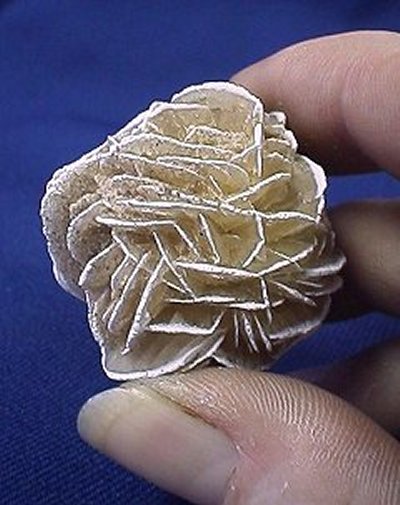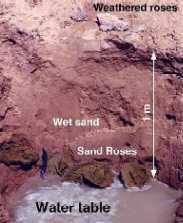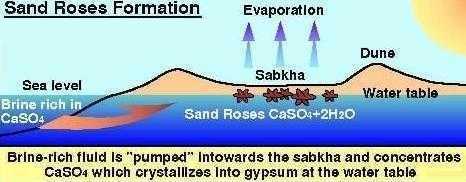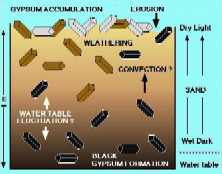
Locality 11
Inter Dune
Interdune areas are troughs between dunes, ranging from interdune flats to interdune depressions.
Interdune deposits are generally isolated lenticular bodies of flat bedded or ripple laminated or adhesion rippled sandstone perhaps with muddy drapes and desiccation cracked muds with evaporative crusts and an irregular salt-ridge microtopography.
Evaporite dissolution and reprecipitation causes the collapse of the salt ridge fabric (Reading, 1996).

source http://www.earlham.edu/~greshjo/Rosette.htm
Gypsum Rosette
Sand roses occur in this area growing at the water table 1m below the surface, and are found in a variety of sizes ranging from small rosettes 1cm across to large cluster, more than 1m in diameter made up of perfectly formed gypsum crystals that split along cleavage Planes producing the characteristic rosette form.
Once at the surface sand roses are very prone to weathering and dissolution occurs (Denis Mougenot).


source http://membres.lycos.fr/middle_east/Mougenot.html

source http://membres.lycos.fr/middle_east/Mougenot.html
Sediments here are bioturbated with plant root moulds, and vertebrate and invertebrate fossils can be found.
This page was created by Pamela Williams
Last Modified:18/06/02